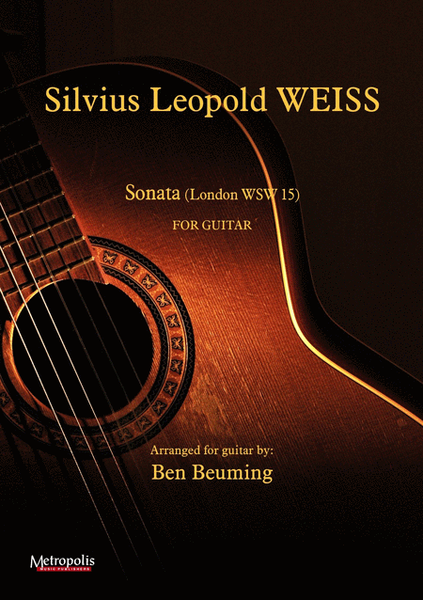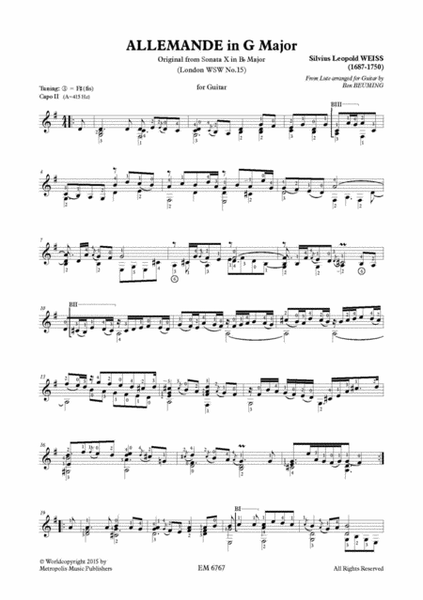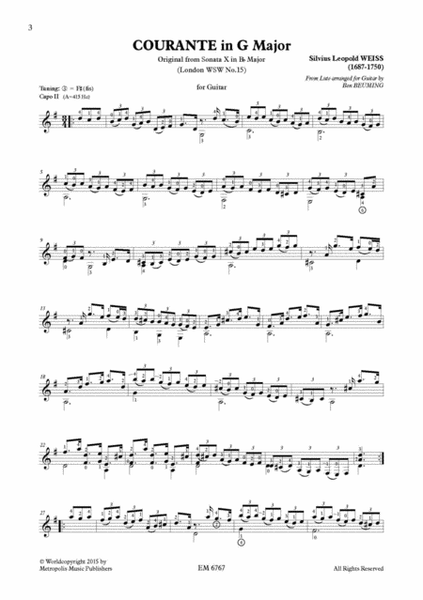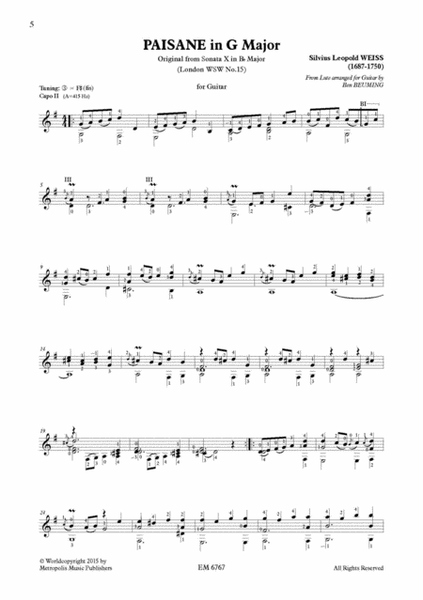Sonata X (London nr.15) for Solo Guitar
-
Ships in 1 to 2 weeks
Details
Description
SKU: IS.G6767EM
Composed by Silvio Leopold Weiss. Arranged by Ben Beuming. Plucked - Guitar. Metropolis Music Publishers #G6767EM. Published by Metropolis Music Publishers (IS.G6767EM).ISBN 9790365067671.
This sonata (WeissSW No. 15, London) is one of a new series of eight sonatas by Silvius Leopold Weiss arranged for the first time for guitar and published by Metropolis Music. Sonata X comes from Weiss’s middle ‘productive’ period, thought to have taken place between 1719 and 1725. The original tablature manuscript is in the British Library (London Ms. Add. 30387). The Sonata has six movements: Allemande, Courante, Paisane, Sarabande, Menuet, and it ends with a Gigue. There is a another copy of this Sonata in the Warszawa Biblioteka Uniwersytecka Poland (in its entirety), and a copy in the Sächsisches Landesbibliothek in Dresden (Suite XXVI), which contains three concordant movements: Allemande, Courante, and the Gigue. The Dresden manuscript displays some differences from the London manuscript. This Edition has taken those differences into account in certain details. Originally, the Sonata is written in B flat major, a key often used by Weiss as it is appropriate for playing the lute, but rather awkward with the guitar. For ease and effectiveness of playing, I have transposed the Sonata a minor third lower to G major. To create more concordance with the baroque tuning of the lute, the G string is lowered by a semitone to F sharp. I suggest using a capodastro to achieve the original pitch. Based on the present standard of A at 440 Hertz, the capo should be placed at the 3rd fret. However, during Weiss’s lifetime, it was more common in many parts of Germany to use a standard of A at 415 Hertz -‐ a semitone lower. So, to hear the pitch heard by Weiss and his contemporaries, the capo should then be positioned at the 2nd fret.




 Share
Share